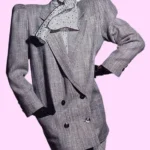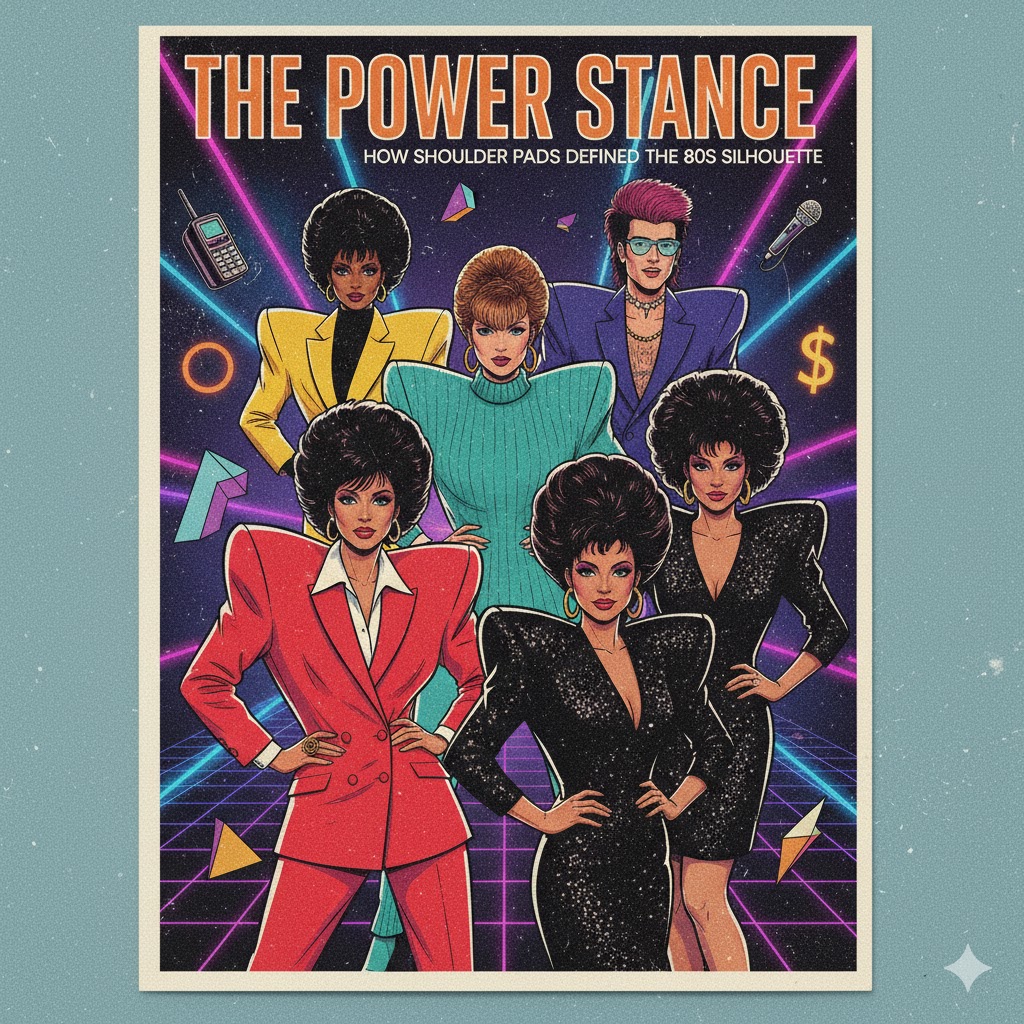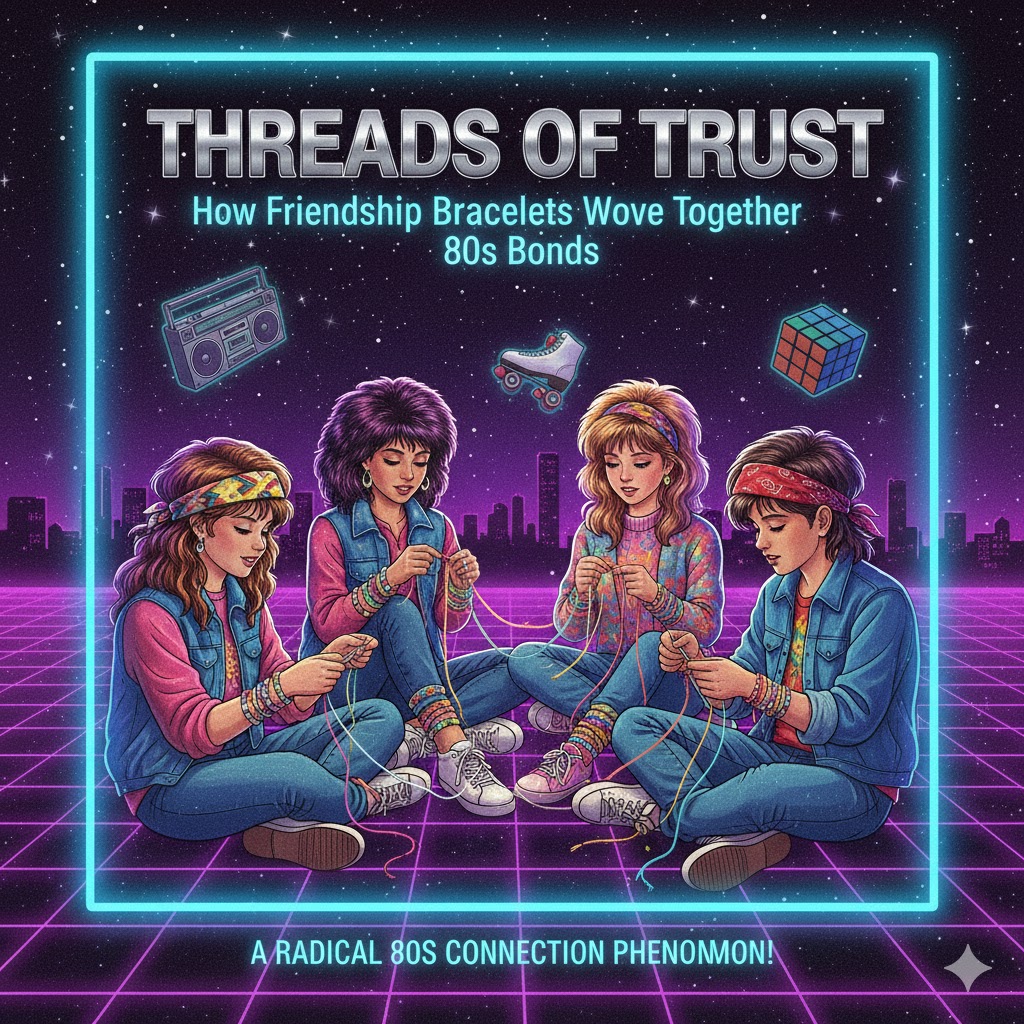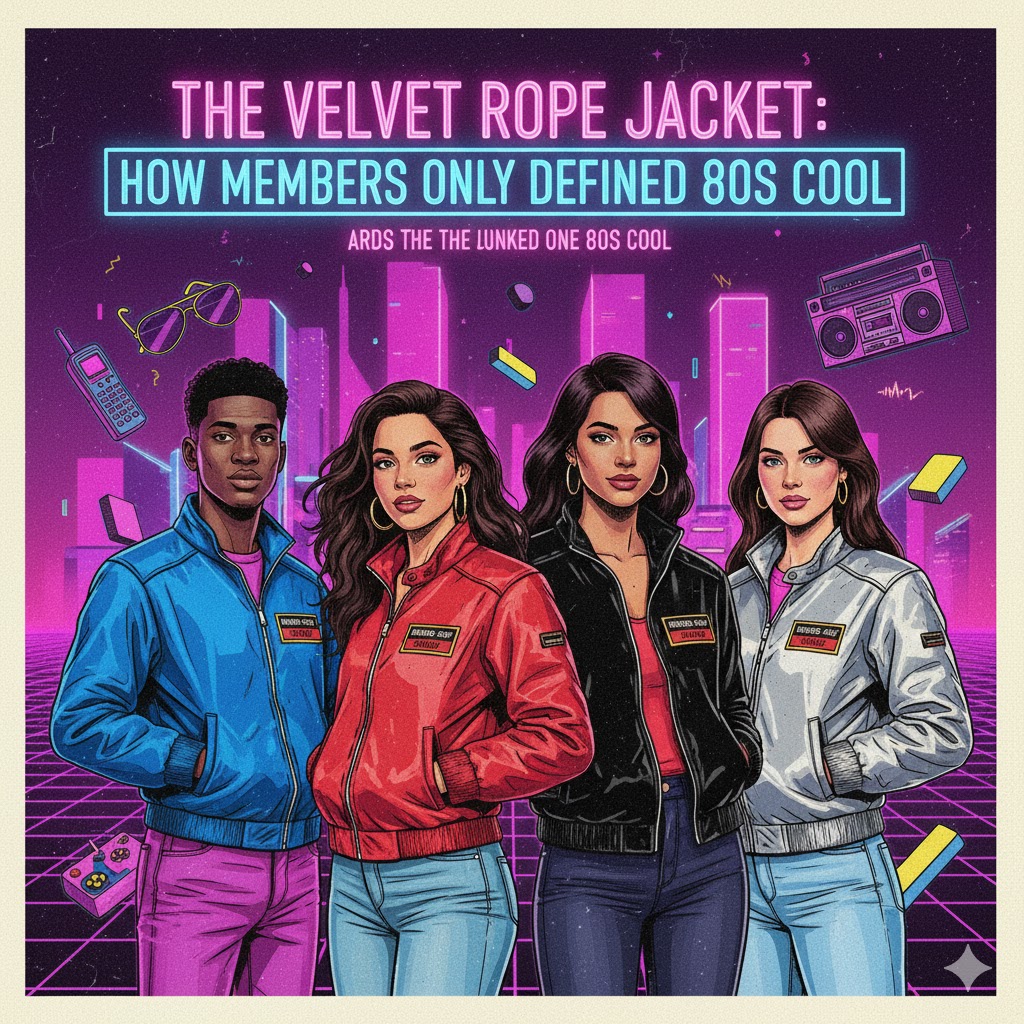 The 1980s were about making a statement—bold colors, big hair, and an unapologetic sense of ambition. But no single fashion element captured the decade’s spirit quite like the shoulder pad. More than just a piece of tailoring, these rigid inserts—found everywhere from blazers and blouses to evening gowns and even T-shirts—were a cultural force, defining the decade’s silhouette and reflecting a monumental shift in social dynamics, particularly for women.
The 1980s were about making a statement—bold colors, big hair, and an unapologetic sense of ambition. But no single fashion element captured the decade’s spirit quite like the shoulder pad. More than just a piece of tailoring, these rigid inserts—found everywhere from blazers and blouses to evening gowns and even T-shirts—were a cultural force, defining the decade’s silhouette and reflecting a monumental shift in social dynamics, particularly for women.
The Origin of the Exaggeration
While pads had historical roots in military uniforms and early 20th-century suits, their resurgence in the 1980s was entirely about intentional exaggeration. The trend wasn’t subtle; it was architecture for the body, dramatically widening the shoulders to create a formidable, inverted triangle shape. This was a fashion trend that shouted confidence and competence.
The look took hold in the late 1970s and exploded after 1980, driven by the rising popularity of the power suit. As more women entered executive and management roles, they needed a sartorial equivalent to the men’s tailored suit. The shoulder pad served as a visual uniform, lending an air of authority and size in the male-dominated corporate world. It was fashion as armor, designed to level the playing field quite literally across the boardroom table. This “power dressing” phenomenon quickly spilled from the office into every corner of pop culture.
The Screen and the Stage
The shoulder pad’s pervasive cultural influence was amplified by its presence on television and in film. No discussion of 80s fashion is complete without mentioning the fictional characters whose iconic looks were built on these squared-off shoulders.
Television was the primary engine. Shows centered on wealth, ambition, and drama, such as Dynasty, became instant fashion benchmarks. Joan Collins’s character, Alexis Carrington, frequently wore suits with shoulders so wide they practically needed their own zip code. These exaggerated looks signaled untouchable status and ruthless power. Similarly, the primetime soap Dallas and the later professional drama L.A. Law used the sharp, powerful lines of padded clothing to visually communicate success and authority. These shows made the padded silhouette aspirational—a look that said, “I have arrived.”
On the musical stage, the pads were adopted and transformed by icons who used them for dramatic, futuristic effect. Grace Jones famously took the look to an extreme, blending it with avant-garde styling that was both aggressive and stunning. Pop stars like Annie Lennox of the Eurythmics incorporated pads into an androgynous, sharp style, challenging traditional gender norms and visually asserting her equal footing in the music industry. The shoulder pad, therefore, symbolized not just corporate power, but pop power and gender fluidity.
Fashion Democratization and Cultural Impact
The defining characteristic of the 80s shoulder pad was its democratization. Unlike earlier fashion trends that stayed exclusively within the realm of haute couture, the padded look swiftly cascaded down from designer runways to department stores, mall shops, and thrift racks.
Suddenly, padding wasn’t reserved for tailored wool suits. It appeared in:
- Knits and Sweaters: Even cozy cardigans and oversized jumpers were given structure.
- Denim Jackets: The casual, rugged look of denim was instantly transformed with added bulk and shape.
- Dresses and Blouses: Almost any garment that covered the shoulder area was fair game, ensuring that virtually every woman—regardless of age, income, or profession—could participate in the defining trend of the decade.
This widespread availability meant that the psychological impact of the shoulder pad was felt by an entire generation. It gave the wearer an instant sense of physical presence and gravitas. Slouching was virtually impossible, forcing an upright, confident posture. For young girls and women, it represented a tangible connection to the powerful characters they saw on screen—a wearable badge of adult strength and capability.
The trend’s saturation led to moments of absurdity, as fashion often does. Pads were sometimes comically oversized or misplaced, leading to silhouettes that defied physics. They were often removable, leading to the bizarre experience of finding loose foam pads migrating in the laundry or flopping inside jackets. Yet, even the comedy surrounding the pads was part of their cultural ubiquity.
The shoulder pad was more than a fleeting style choice; it was a physical manifestation of the 80s ethos—ambition, success, and the desire to take up space. It empowered women entering new professional spheres and gave the decade’s fashion a distinctive, imposing edge that remains instantly recognizable as pure 80s pop culture



